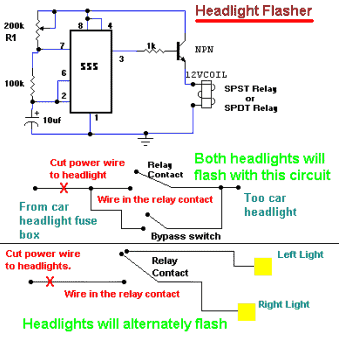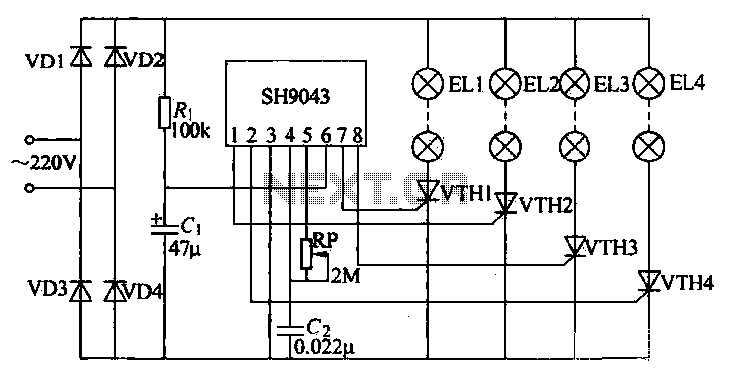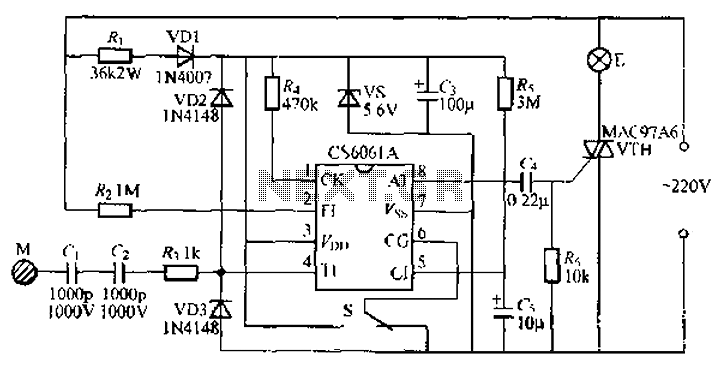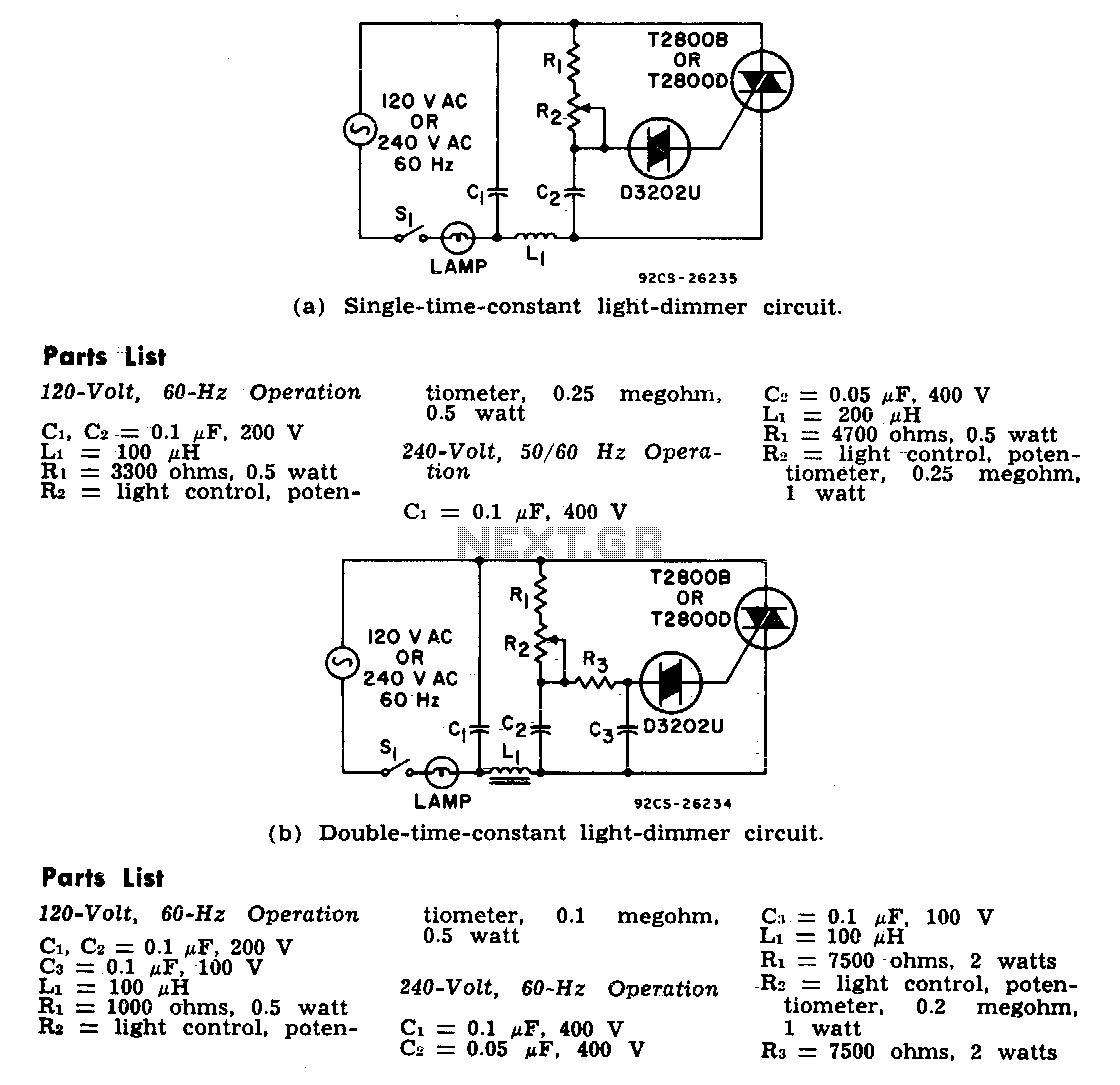
256 Run LIght (for the 8bit bin to 256 / 1 of 256)

Switch S1 allows for direction change (Up/Down), Pot1 adjusts the clock speed, and LED D1 serves as an indicator for the clock speed.
The circuit utilizes a switch (S1) to control the direction of operation, allowing for two modes: upward and downward movement. This switch is typically a double-pole double-throw (DPDT) type, which can effectively reverse the polarity of the output signal depending on its position.
The potentiometer (Pot1) is employed to vary the clock speed, which can be crucial for applications requiring precise timing adjustments. This component is generally a linear or logarithmic potentiometer, providing a variable resistance that modifies the frequency of the clock signal fed into the circuit. The clock signal can be generated using an oscillator circuit, where the frequency is determined by the resistance set by Pot1 and any associated capacitive components.
LED D1 functions as a visual indicator of the clock speed. It typically connects in parallel with the clock output, allowing it to illuminate in accordance with the frequency of the clock pulses. The brightness of the LED can vary depending on the clock speed; higher speeds may result in a more intense light, while lower speeds may dim the LED.
Overall, this circuit configuration is beneficial for applications such as motor control, where direction and speed adjustments are essential. The integration of the switch, potentiometer, and LED provides a user-friendly interface for real-time adjustments and visual feedback on the operational status of the circuit.With Switch S1 you can change direction (Up/Down), Pot1 is for the clock speed and the Led D1 is only an indicator for the clock speed. .. 🔗 External reference
The circuit utilizes a switch (S1) to control the direction of operation, allowing for two modes: upward and downward movement. This switch is typically a double-pole double-throw (DPDT) type, which can effectively reverse the polarity of the output signal depending on its position.
The potentiometer (Pot1) is employed to vary the clock speed, which can be crucial for applications requiring precise timing adjustments. This component is generally a linear or logarithmic potentiometer, providing a variable resistance that modifies the frequency of the clock signal fed into the circuit. The clock signal can be generated using an oscillator circuit, where the frequency is determined by the resistance set by Pot1 and any associated capacitive components.
LED D1 functions as a visual indicator of the clock speed. It typically connects in parallel with the clock output, allowing it to illuminate in accordance with the frequency of the clock pulses. The brightness of the LED can vary depending on the clock speed; higher speeds may result in a more intense light, while lower speeds may dim the LED.
Overall, this circuit configuration is beneficial for applications such as motor control, where direction and speed adjustments are essential. The integration of the switch, potentiometer, and LED provides a user-friendly interface for real-time adjustments and visual feedback on the operational status of the circuit.With Switch S1 you can change direction (Up/Down), Pot1 is for the clock speed and the Led D1 is only an indicator for the clock speed. .. 🔗 External reference





